Bio
Ragna Sigurðardóttir (Ragnheiður Sigurðardóttir) was born in Reykjavík on August 10, 1962. She studied art at The Icelandic College of Arts and Crafts and after graduation moved to Holland for further studies. For a while Ragna lived in Denmark, but has now moved back to Iceland where she works as a writer and artist.
Ragna published a small book in 1987 called Stefnumót (Date). Two years later she followed this debut with another book, Fallegri en flugeldar (More Beautiful than Fireworks) and again two years later the third book arrived, 27 herbergi (27 Rooms). Two of these books also contain art by the author. In 1993 she published the novel Borg (City), garnering considerable notice. The novel was nominated for the Icelandic Literature Prize the same year. Since then Ragna has published five novels, the most recent being Vinkonur (Friends) in 2016. Three years later she published a selection of short stories, Vetrargulrætur (Winter Carrots. In addittion to this, she has written articles for newspapers and magazines and has translated a number of novels, mostly from Dutch, but also English and Danish.
Ragna Sigurðardóttir lives in Bessastaðahreppur, close to Reykjavík.
Publisher: Mál og menning.
Author photo: The Reykjavík Museum of Photography.
About the Author
“A wonderful autumn in my city”: on the Works of Ragna Sigurðardóttir
Deep in the earth the woman in one of Ragna Sigurðardóttir’s poems finds oranges: “sweet and juicy oranges” (sætar og safaríkar appelsínur). In the morning she had combed her hair and stroked the growth with her hand: “Feels flowers bloom under her fingertips. Buttercups and camomile” (Finnur blóm springa út undir fingurgómunum. Sóleyjar og baldursbrár). Then she goes out into the garden and “burrows and digs with bare hands” (rótar og grefur með berum höndum) with aforementioned results.
The poem, which is untitled, is the third poem of the book Fallegri en flugeldar (More Beautiful than Fireworks) from 1989 and illustrates Ragna’s approach to language well, the text is very visual and the style is characterised by a concise and striking imagery. It is a little decorous without being pretentious and the fantasy is plain and comes naturally.
Ragna Sigurðardóttir studied art, and is both an artist and a writer. Her first book was a collection of short stories/prose poems called Stefnumót [Dates] (1987). The common symptom of the proses is that they go in circles, and thus have a kind of a date with their own beginnings. Ragna’s texts also have continual dates with one another: in the final poem of Fallegri en flugeldar the guardian angel dressed in blue says: “The rooms are twenty-seven. You have to begin at the beginning” (Herbergin eru tuttuguogsjö. Þú verður að byrja á byrjuninni), and one of Ragna’s books is called 27 herbergi [27 Rooms] (1991). The first poem of that book refers to the novel Borg [City] (1993), saying that the streets are like deep crevasses, and this is how the streets of the City are described.
As already indicated, Ragna’s texts are very visual, almost tangibly so and those images refer to one another between pages and books. This world of imagery is half-surreal as reality and imagination become relative, jewels come to life in the figurative language of the story “á vetrarmorgni” [on a winter’s morning] where “snakes caress the neck and the arms” (snákar gæla við hálsinn og upphandleggina) for “on her the gold is alive” (á henni er gullið lifandi). Dreams become reality in the story “í flæðarmálinu” [on the shore], where the narrator dreams of mermaids. “She woke up naked. Stretched out on the wet cliff and could feel scaly bodies all around her” (Hún vaknaði nakin. Teygði úr sér á blautri klöppinni og fann fyrir hreistruðum líkömum allt í kringum sig.) Then the dreams change: “there she was with two legs and soft skin and warm blood” (þar var hún tvífætt með mjúka húð og heitt blóð), and when she wakes up suddenly she caresses her body: “The familiar touch of the scales calmed her down.” (Gamalkunnug snertingin við hreistrið róaði hana).
In 27 herbergi a kind of hyper reality reigns, becoming surreal in its simplicity and through the foggy backdrop of the 67 hotel rooms that decorate the book and refer to its title. Not only are there many more rooms than the title indicates, the poems themselves are 28, and thus the balance is shaken, things are never what they seem to be or claim to be, as it says in the first poem: “When I leave I will say that I will never come back but I am always here” (Þegar ég fer segist ég aldrei munu koma aftur en ég er alltaf hér).
These first poem/prose books by Ragna, Stefnumót and Fallegri en flugeldar are both characterised by physical imagery, often with erotic undertones. The emphasis is very physical, women make love, shift shapes, kill and are killed and are covered in blood, their own and that of others. 27 herbergi could almost be read as a kind of a journal of memories, or an album of the mind, the poems flash quick images from daily life:
Ég var hjá tannlækninum. Hallaði mér aftur í stólnum. Stúlka aðstoðaði hann. Þau voru bæði með grænar grímur. Allt í einu tók ég eftir því að þau höfðu bæði sérstaklega falleg augu, hans voru brún, hennar græn. Eitt andartak varð ég mjög glöð.
[I was at the dentist’s. Leaned back in the chair. A girl was assisting him. They both had green masks. Suddenly I noticed that they both had unusually beautiful eyes, his were brown, hers green. For a moment I became very happy.]
There is more distance in the text than in the two first books, and this fits well with the distant austerity of the hotel-rooms. In their own way the rooms form an uncanny image of a city or even a journey between cities and many of the poems refer to a cityscape, a street that is full of gold and Jews, streets that are slippery with ice and snow, underground trains and lovers meetings:
Þegar ég hitti þig fyrst varð ég prinsessa. Þú varst prinsinn minn og sendir mér pappírskossa úr símskeytum þá morgna sem þú varst í burtu. Þetta var dásamlegt haust í borginni minni, hún hafði aldrei verið eins falleg.
[When I first met you I became a princess. You were my prince, sending me paper kisses in telegrams those mornings when you were away. This was a wonderful autumn in my city, it had never been so beautiful.]
In the novel Borg [City] the young advertisement designer Logi finds a tourist booklet describing a city. After a short while Logi discovers that this city is the one he lives in, and it is also something more, for the text of the booklet starts like this: “The city is all cities. It is a universal city. Each detail within it is a symbol of all others in all other cities” (Borgin er allar borgir. Hún er alheimsborg. Hvert smáatriði innan hennar er tákn allra annarra í öllum öðrum borgum) (19). This is iterated later in the story where the linguist and translator Vaka plays a translating game with the city, she “reads herself after an imaginary map like a page in a book, from left to right” and compares the city to other cities: “In New York [the Reykjavík street] Laugavegur would be Broadway, in Amsterdam Kalverstraat, in Copenhagen Strøget” (Í New York væri Laugavegurinn Broadway, í Amsterdam Kalverstraat, í Kaupmannahöfn Strikið) (92). Thus the city is not only all cities but also the book itself, Borg, as becomes clear when descriptions from the tourist booklet appear in the novel, as a normal part of the narrative.
Finally, the city itself appears in the novel’s text, assaulting it almost tangibly in two chapters describing the square that does not exist on any map, according to the tourist booklet. Soon a chapter appears that describes an afternoon on such a square. The chapter is set apart from the rest of the narrative in the way that the viewpoint is unknown, otherwise the novel is written from the viewpoint of its three characters, Úlla, Vaka and Logi. Later in the novel the chapter appears again, only now the square is seen in the morning and the events are a little different. A chapter on the square appears for a third time, identical to the first one, only now it is barely visible, emerging like a pale copy of itself, printed in grey apart from the function words, they are still in black. In this way the city emphasises its presence in the text.
The novel Borg is among the most memorable and remarkable Icelandic novels of the nineties. It has an unusual place in Icelandic literary history and can without doubt be called a literary event. The story tells of three young people in a city that is in many ways similar to Reykjavík but is also hugely different from it. Úlla is the character that is closest to the city, described as a living body “that Úlla senses to her fingertips” and she “breathes in rhythm with this body”. Úlla works in the aluminium factory, located outside the city and in an enjoyably unusual imagery her connection to the city is described as natural: “She is a nature’s child, directly connected to the city, the streets, the sun, the heat, the cars, the girl that swings her buttocks in front of her on the pavement” (Hún er náttúrubarn, í beinum tengslum við borgina, göturnar, sólina, hitann, bílana, stelpuna sem dillar rassinum fyrir framan hana á gangstéttinni) (32).
Logi is also a child of the city, but in a different way from Úlla. He works in advertising, which he took up rather than writing poetry: “The form of the ad is to the point, effective, visual, a direct hit” (Form auglýsinganna er hnitmiðað, áhrifamikið, sjónrænt, beint í æð) (62) he says, apparently not realising the similarity to the form of poetry. The third character is the linguist student and translator Vaka, who sees herself as a messenger of words, she “fetches words and brings them home, adapting them to her own area like an explorer who brings with him alien goods; after a while they become a part of his society” (sækir orð og ber með sér heim, lagar þau að sínu eigin svæði eins og landkönnuður sem flytur með sér framandi vörur; innan skamms verða þær hluti af samfélagi hans) (34).
Between those three a kind of a strange love-triangle is formed, but undefined and difficult love affairs, or love affairs that end suddenly, are a common theme in Ragna’s novels, as it is also in the prose poems of 27 herbergi.
Above all the novel is a kind of an ideological exploration on the phenomenon/concept of the city, and a successful ideological exploration of this kind is highly unusual in Icelandic literature. As already said, the city is in many ways a variation on Reykjavík and refers clearly to Iceland. This is not a familiar reality for inhabitants of Reykjavík, however, rather the story presents a kind of a familiar alienness, or as it says in the description of the tourist booklet that Logi is reading: “The pictures are familiar but he was not sure where they were taken. The views they show are alien to him” (Myndirnar eru kunnuglegar en hann er ekki viss um hvar þær eru teknar. Sjónarhornin sem þær sýna eru honum framandi) (19).
This alien familiarity corresponds to theories of cities and city culture, and ideas about how the city is formed in the mind of the citizen. In his article on how to look at cities, Chris Jenks says that the regular yet irregular journey that the city provides us with, and which is its foundation, offers repeated and endless collages of images and is thus a repository for a fresh deploy of the imagination. (Chris Jenks, “Watching Your Step: The history and practice of the flâneur”, in Visual Culture, ed. Chris Jenks, London and New York: Routledge, 1995, p. 155.)
One of the features of the city is the society of consumption that creates it and forms its facade. Advertisements play a large role in Borg, providing the story at times with a cinematic look, appearing to us as a kind of a script. Logi is really into ads, and for him they are a way to enjoy life to the full, to have only the best. Úlla often answers Vaka with catchphrases from ads that she has glimpsed off the numerous advertising signs outside and inside the city. At times, different texts from ads merge together, as for example when Úlla is sitting on the bus on the way from the aluminium factory to the city:
FALLEG MYNSTUR SKAPAST Á MILLJÓNUM ÁRA GÖFUGAR HUGSANIR EKKERT ENDIST LENGUR EKKERT FER HRAÐAR BÓKMENNTIR LÍFRÆNIR ÞÆTTIR EINBEITA SÉR AÐ FRAMKOMU ÞAÐ ER UM SVO MARGA LITI AÐ VELJA VAL UM ENDALOK NÍTJÁN MÖGULEIKAR SEM ERU ÞÉR AÐ SKAPI NOKRAR MÍNÚTUR Á DAG GERT FYRIR ALLAR HÚÐTEGUNDIR (11)
[BEAUTIFUL PATTERNS ARE FORMED IN MILLION YEARS NOBLE THOUGHTS NOTHING LASTS LONGER NOTHING GOES FASTER LITERATURE BIOLOGICAL ELEMENTS TO FOCUS ON CONDUCT THERE ARE SO MANY COLOURS TO CHOOSE FROM CHOICE OF THE END NINETEEN POSSIBLITIES THAT ARE TO YOUR LIKING A FEW MINUTES A DAY MADE FOR ALL SKINTYPES]
In the same way the cityscape is jumbled together for it is difficult to demarcate neighbourhoods (that are clearly demarcated): “A walk over one street, and suddenly the walker finds himself in another world” (Gengið er yfir eina götu, og skyndilega er vegfarandinn staddur í öðrum heimi) (27) it says in the tourist booklet and then the square that cannot be found on any map must not be forgotten, but from there, apparently unavoidably, the road leads “to a large white square surrounded by churches and official buildings. Around the square the outdoor cafés are busy and on sunny days a buzz of lively conversation goes in waves over the warm square” (út á stórt hvítt torg umkringt kirkjum og opinberum byggingum. Hringinn í kringum torgið eru útikaffihúsin iðandi af lífi og á sólríkum sumardögum gengur kliður líflegra samræðna í bylgjum yfir heitt torgið” (26).
At this point in the narrative Logi stops reading and realises that he is located in the middle of such a square and “for a moment he hesitates, surprised to be reading about the moment and living it at the same time” (andartak hikar hann, í undrun sinni yfir því að lesa um andartakið og upplifa það um leið) (26).
This flow from one thing into another, between ads, streets, descriptions and reality calls to mind Michel de Certeau’s description of the flâneurs, the Wandersmänner or simply the walkers “whose bodies follow the thicks and thins of an urban ‘text’ they write without being able to read it.” They use a space that is actually invisible and the paths they follow are “unrecognised poems”, each body is signed by a number of others to evade legibility. “The networks of these moving, intersecting writings compose a manifold story that has neither author nor spectator, shaped out of fragments of trajectories and alterations of spaces: in relation to representations, it remains daily and infinitely other.” (Quoted in “Watching Your Step: The history and practice of the flâneur”, Chis Jenks, in Visual Culture, ed. Chris Jenks, London and New York: Routledge, 1995, p. 156)
Literary critic Jón Karl Helgason points out in his article ““Og borgin tekur mig”” (And the city takes me) that “a few scenes in Ragna’s narrative refer to similar descriptions in other Icelandic novels in such a clear way that there can hardly be a coincidence.” (Jón Karl Helgason, ““Og borgin tekur mig”. Borgarkort fjögurra sagnaskálda”, (And the city takes me. The city map of four novelists) in Skírnir, autumn 1999, p. 483)
In this way the novel positions itself clearly in a certain niche of Icelandic literary landscape. This landscape would still be alien to most readers, as he is here referring to two mostly unknown novels, Byggingin (The Structure) (1988) by Jóhamar and Miðnætursólborgin (Midnight Sun City) (1989) by Jón Gnarr, and one somewhat better known by Sjón, Stálnótt (Night of Steel) (1987). All these city narratives are characterised by a futuristic vision, simultaneously chilling and adventurous, taking its cue from science fiction and science fiction films as Jón Karl points out.
In her next novel, Skot (Shot) (1997), Ragna is still persuing the theme of the city, only now it is the modern landscape of Rotterdam that is the location of the story. The narrative is divided between two cultural worlds that are being spun together, forming a cohesive whole. On one hand there is the foreign and modern world of a crime novel, and on the other there is the old Icelandic world of folktales, appearing in the form of the fetch Bokki the bird. Ragna is again bold in her experiments with subject and form. Skot is a charming tale and in many ways enjoyable and interesting, while not as unusual as Borg. This is the story of Margrét who lives in Rotterdam in Holland and her fetch Bokki. One day she accidentally meets the handsome and charming Arno in a bookstore, invites him home with her and seduces him, but as she walks him to the street he is shot down in front of her. Fascinated and scared, Magga sets out to search for the killer, and this search is at the same time a search for a clearer picture of the man who is the father of her unborn child, as she is pregnant after the first ‘shot’. Thus the narrative is in a way addressed to this child.
The text is crisp, and the narrative is disciplined, characterised by many insertions and rich imagery. It is clear that the structure of the work is influenced by the cinema, as indicated by a kind of a cutting style, or a montage, were the reader is swiftly shifted between scenes. This works well and plays a large part in creating atmosphere and tension within the novel. The chapters describing the shot itself, “Hringsjá” (Periscope) and “Plast” (Plastic) are good examples of this cinematic influence. In the beginning of “Hringsjá” the narrator describes this technique:
Ef við trúum því að hægt sé að líkja augum okkar og heila við ljósmyndavél og filmu og að heilar okkar nemi umhugsunarlaust allt það sem fyrir augu okkar ber og greypi það óafturkallanlega í minni okkar, væri eftirfarandi kafli marktæk lýsing á því sem greypt er í minni Arnos á því augnabliki þegar hann hnígur niður við enda Lage Erfbrug með byssukúlu í hjartanu, þann 27. apríl 1997, klukkan 17:12. (23)
[If we believe that our eyes and brain can be likened to camera and film and that our brains receive without thought all that appears in front of our eyes, embedding it irrevocably into our memories, the following chapter would be a true description of what is embedded in Arno’s memory at the moment when he collapses at the end of Lage Erfbrug with a bullet in his heart, on April 27, 1997, at 17:12.]
Eiríkur, a policeman, and an iffy photographer, becomes mixed up in the case, as well as Magga’s friends.
In the past few years writers have to an increasing extent used the form and technique of popular fiction and film. This is probably due to (at least) two things; on one hand the zeitgeist is characterised by a certain return to the narrative and on the other hand the gap between popular fiction and belles lettres has been growing narrower, together with a changed approach to evaluation, where there is no longer a clearly defined standard together with a more flexible appreciation, using a wider set of codes. The crime novel has been the most popular of these re-cycled forms, and in a way all novel reading can be likened to reading a thriller where the reading is driven by the urge for the ending and the solution.
Still, it would be difficult to maintain that Ragna’s Skot is a traditional crime novel, for it uses the form of the crime novel in an independent and pointed way, without necessarily being perfectly true to it. This is evident from the way Ragna weaves the fairytale theme of the fetch Bokki into the highly realistic form of the crime novel, and the interaction between these is without doubt one of the best parts of Skot. The fetch in Icelandic folktales can be evil, however, it can also be a kind of a guardian angel and at the same time a kind of another self, or the doppelgänger of the one who it is attached to. As such the fetch has to play an independent part, and soon it emerges that Bokki’s part in the story is more than just to follow Magga around. Ragna chooses to make the fetch visible to all who wish to see it (but in the folktales fetches are invisible to most people), and this enhances Bokki’s importance as well as tying a bow on the fantasy element, for a fetch that is visible is not the same phenomenon as the one that is hidden. Thus Bokki takes on a facade of realism at the same time that he is clearly defined as a supernatural being.
In Ragna’s novel the fetch is a normal part of the daily life of the Icelander, much like the world of the dæmons in Philip Pullman’s trilogy, The Golden Compass, The Subtle Knife and The Amber Spyglass (1995-2000). Magga is just a girl when she sees her fetch for the first time and does not know what it is, “I did not know then that fetches often take on the form of a bird” (33). Bokki is described as a mixture of a raven and an owl and Magga is sceptical: ““What do you do, apart from knocking on doors ahead of me?”” This insults Bokki and he points out to her that he takes care of her, of course, ““This knocking is more of an old habit”” (34). And even though Bokki looks strange, people are oddly unsurprised to meet a speaking owl. Some become curious and then Magga has to “explain all about Icelandic fetches”, who of course are not always like birds, but most often invisible and some say they do not exist” (36). In this way Ragna plays on the folktale as well as the crime narrative and out of these forms she creates a plot that is well written as well as being intriguing.
As already claimed there are clear connections between Ragna’s first books of poetry and her first novel Borg. But even though her work continues to illustrate rich imagery and disciplined language, Skot is very different from these earlier works, and the same can be said about Strengir (Strings), Ragna’s third novel, published in 2000. Strengir is a love story that tells about María and Bogi who meet when they are around twenty and fall very much in love. They start living together and eternal happiness seems to be assured. But cracks start to appear in the relationship and they part their ways, literally when María suddenly decides to go out of town one summer and work and Bogi also makes a similar sudden decision to go to Copenhagen and search for his wayward friend. Ten years later they meet again and there are many unresolved issues. María is by then a single mother while Bogi is married with two children, and before they know love blossoms again and they start a relationship.
As before Ragna’s main strength lies in her charming style and a unique visualisation of her surroundings. This is a rather traditional and familiar love story, complete with triangles and discussions on love, betrayal and loyalty, and Ragna brings this to life with a fine characterisation and an expressive use of language where the author’s background in visual arts shines through. One of the most enjoyable parts of the novel is the frame around the main story, and in particular the frame around María, the main protagonist. María is the daughter of a single mother and when she describes her family to Bogi she only mentions women. “What about men in the family” he asks and receives the answer that there are none, and that men are never mentioned and thus the family is formed out of single mothers for many generations. This creates a unique family image, an image that explains the relations between María and Bogi later in the story. This matriarchy is then further underlined with regular interjections from some kind of a weird being who appears to be female, calls herself a spirit of nature but could just as well be a kind of a female ghost or even a fetch. This folktale reference is then iterated in María’s name, she is also named Myrká (literary “Dark River”. The name refers to a well known Icelandic ghost story). The name comes from one of her foremothers who was supposed to be drowned at Myrká, but was saved by Æri Tobbi (who was an eccentric poet).
This interesting prehistory is connected to the independent familiar Bokki in Skot, for the female ghost, who has functioned as a kind of a guardian spirit for the women, influences the chain of events at a crucial moment. As in Ragna’s former novels and poetry these fantastic elements are unpretentious and effective at the same time, and give the text an individual expression. Ragna’s gift for storytelling is at its best in these chapters and they illustrate that she is without doubt one of our most interesting authors.
© Úlfhildur Dagsdóttir, 2003.
Articles
Articles
Jón Yngvi Jóhannsson: “Billedkunstnerne kommmer : er islandsk litteratur en happening eller en installation? = The coming of the visual artists : is Icelandic literature a happening or an istallation?”
Nordisk litteratur 2001, pp. 72-75
Neijmann, Daisy L., ed. A History of Icelandic Literature
University of Nebraska Press, 2007, pp. 447, 448, 451, 452
Awards
2016 - The Ice Pick, for the Icelandic translation of Daglicht (Konan í myrkrinu) by Marion Pauw
Nominations
1993 - The Icelandic Literature Prize: Borg (City)

Þetta rauða, það er ástin (This Red, That is the Love)
Read moreÞetta rauða, það er ástin er skáldsaga um unga konu sem berst fyrir því að láta drauma sína rætast
Vetrargulrætur (winter carrots)
Read more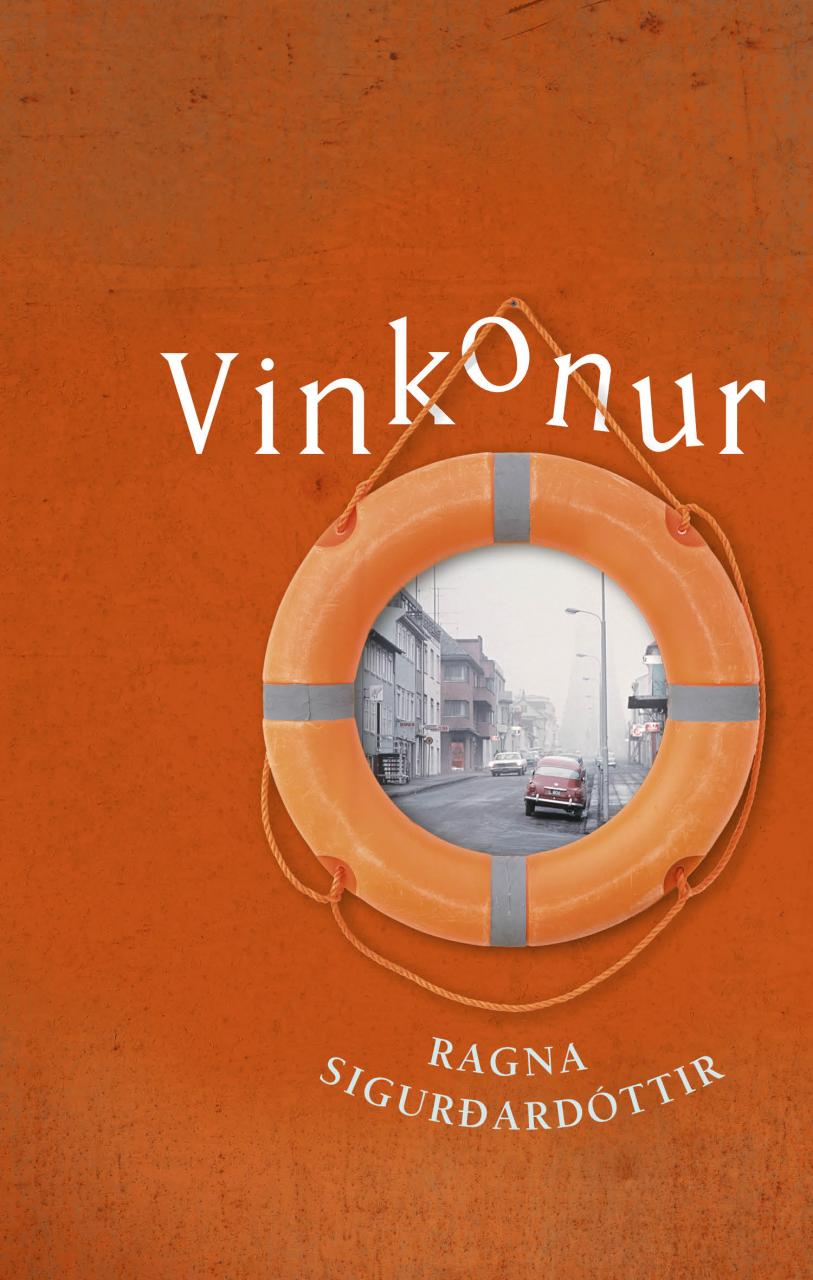
Vinkonur (Friends)
Read more
The perfect landscape
Read more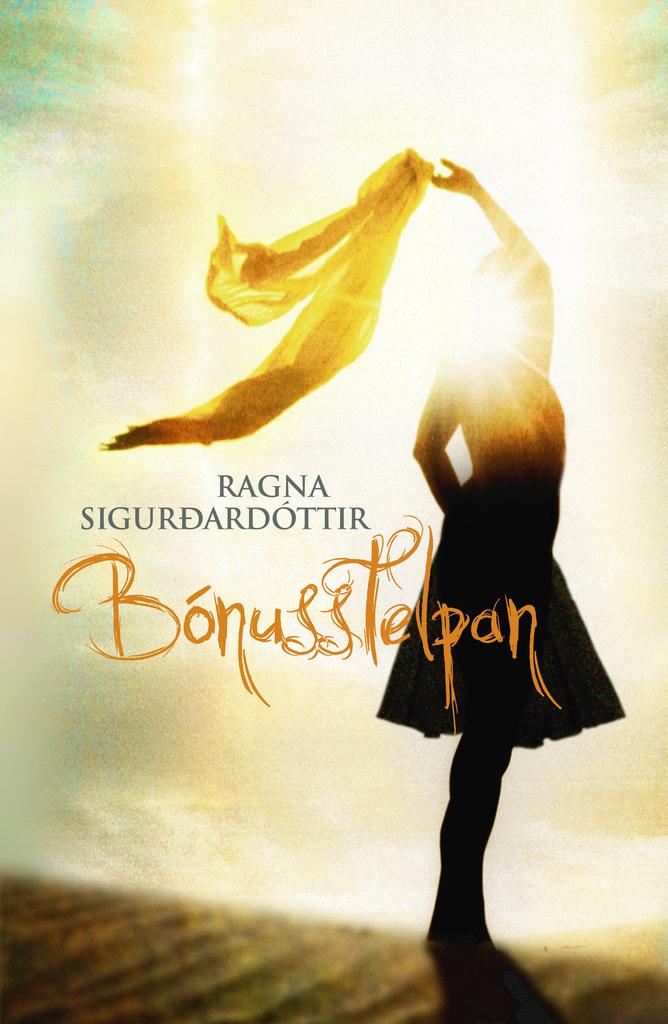
Bónusstelpan (The Bónus Girl)
Read moreDaði : Ódysseifur (Odyssey)
Read more
Hið fullkomna landslag
Read moreMöguleikar myndlistarinnar
Read more
Strengir (Strings)
Read more
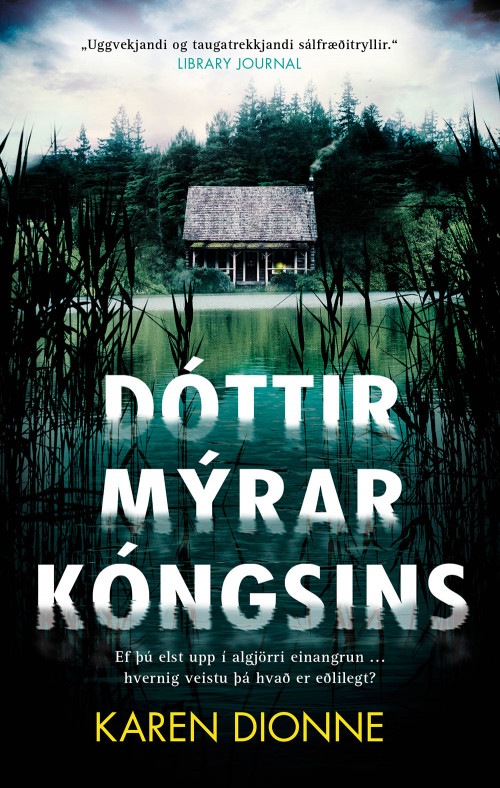
Dóttir mýrarkóngsins (The Marsh king's daugther)
Read more
Þar sem ekkert ógnar þér (Blau Water)
Read more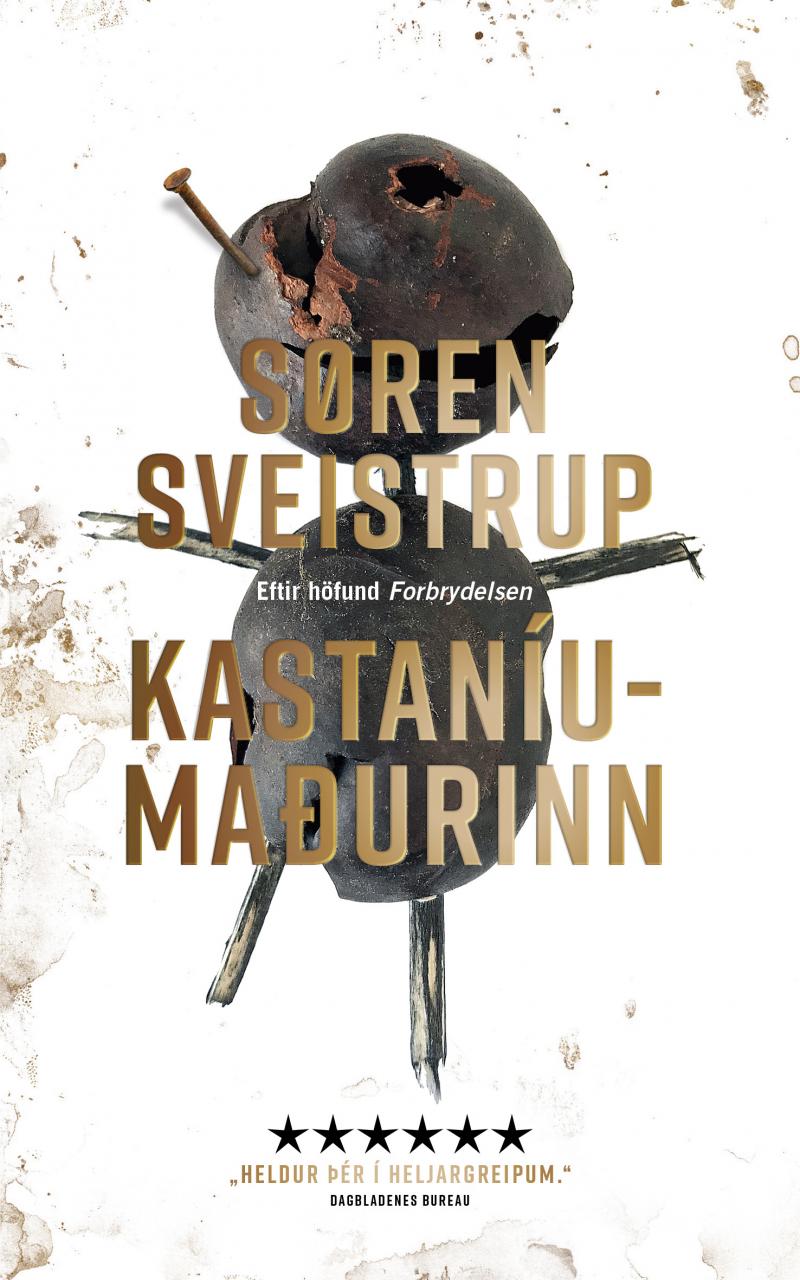
Kastaníumaðurinn (Kastanjemanden)
Read more
Engin málamiðlun (Make me)
Read more
Konan í myrkrinu (Daglich)
Read more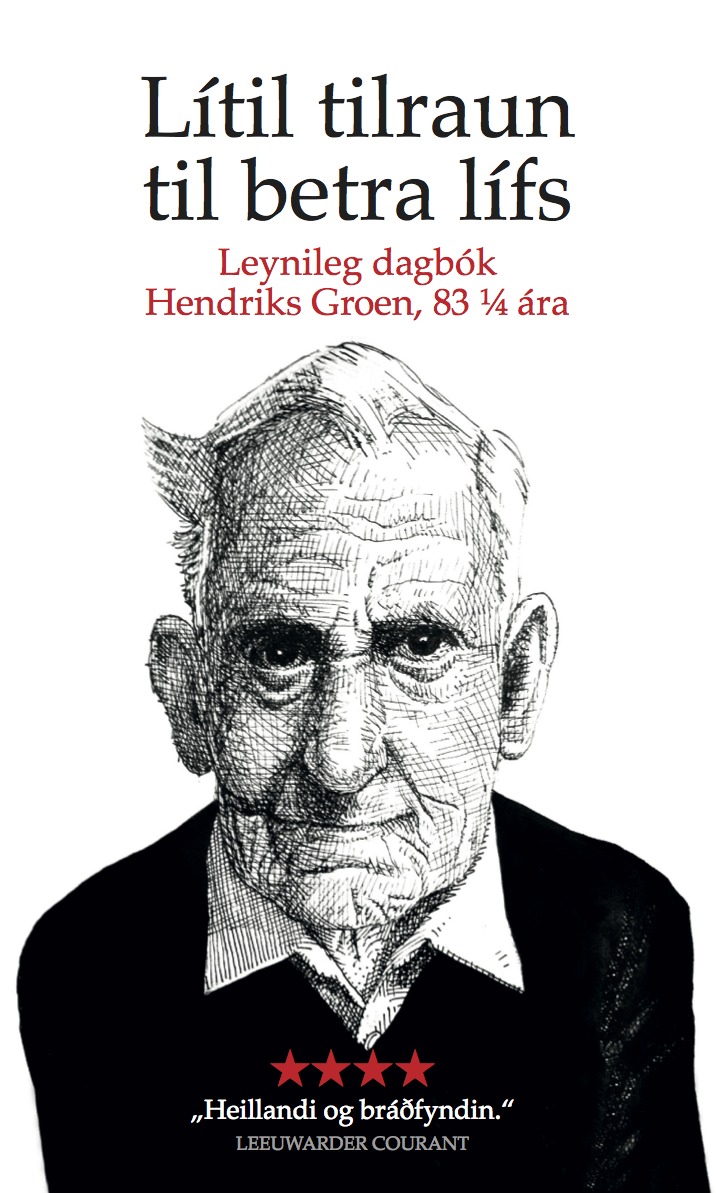
Lítil tilraun til betra lífs: Leynileg dagbók Hendriks Groen, 83 1/4 ára (Pogingen iets van hen leven te maken)
Read more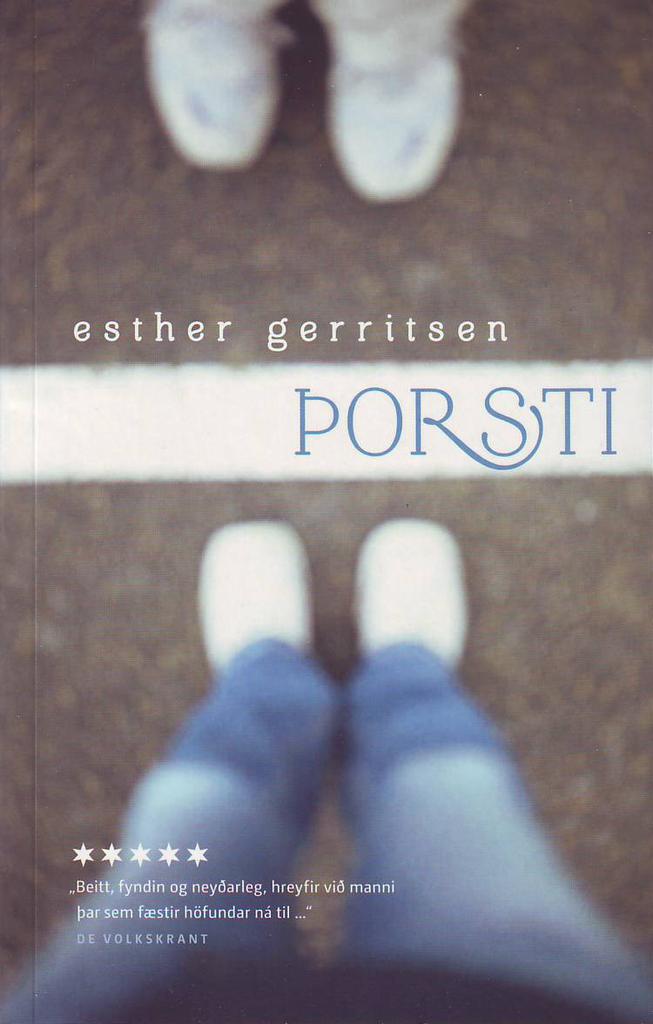
Þorsti (Thirst)
Read more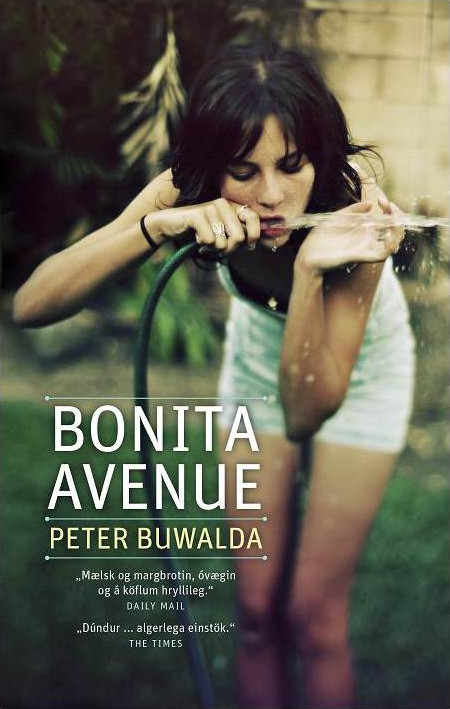
Bonita Avenue
Read more
